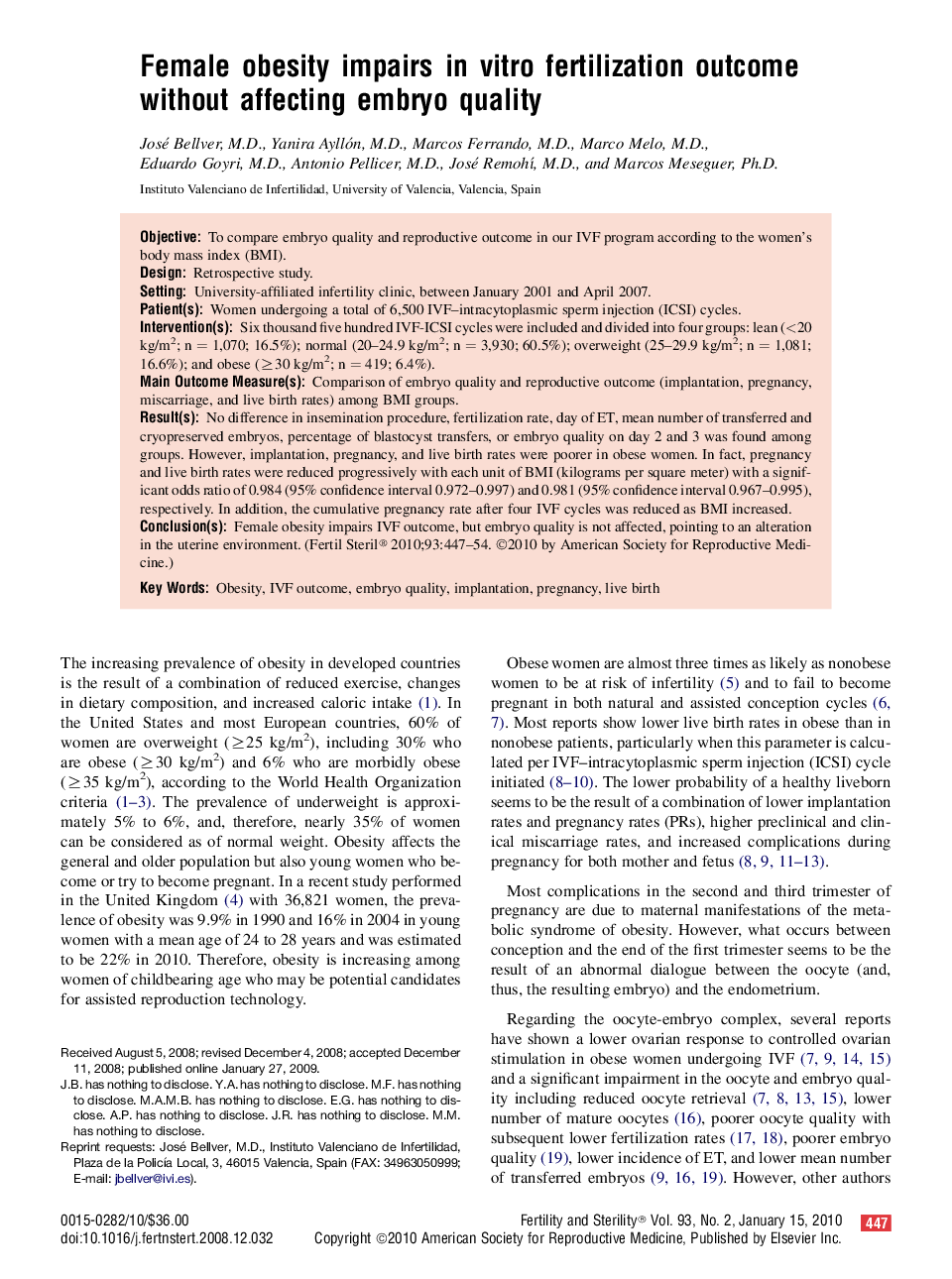| Article ID | Journal | Published Year | Pages | File Type |
|---|---|---|---|---|
| 3933658 | Fertility and Sterility | 2010 | 8 Pages |
ObjectiveTo compare embryo quality and reproductive outcome in our IVF program according to the women's body mass index (BMI).DesignRetrospective study.SettingUniversity-affiliated infertility clinic, between January 2001 and April 2007.Patient(s)Women undergoing a total of 6,500 IVF–intracytoplasmic sperm injection (ICSI) cycles.Intervention(s)Six thousand five hundred IVF-ICSI cycles were included and divided into four groups: lean (<20 kg/m2; n = 1,070; 16.5%); normal (20–24.9 kg/m2; n = 3,930; 60.5%); overweight (25–29.9 kg/m2; n = 1,081; 16.6%); and obese (≥30 kg/m2; n = 419; 6.4%).Main Outcome Measure(s)Comparison of embryo quality and reproductive outcome (implantation, pregnancy, miscarriage, and live birth rates) among BMI groups.Result(s)No difference in insemination procedure, fertilization rate, day of ET, mean number of transferred and cryopreserved embryos, percentage of blastocyst transfers, or embryo quality on day 2 and 3 was found among groups. However, implantation, pregnancy, and live birth rates were poorer in obese women. In fact, pregnancy and live birth rates were reduced progressively with each unit of BMI (kilograms per square meter) with a significant odds ratio of 0.984 (95% confidence interval 0.972–0.997) and 0.981 (95% confidence interval 0.967–0.995), respectively. In addition, the cumulative pregnancy rate after four IVF cycles was reduced as BMI increased.Conclusion(s)Female obesity impairs IVF outcome, but embryo quality is not affected, pointing to an alteration in the uterine environment.
